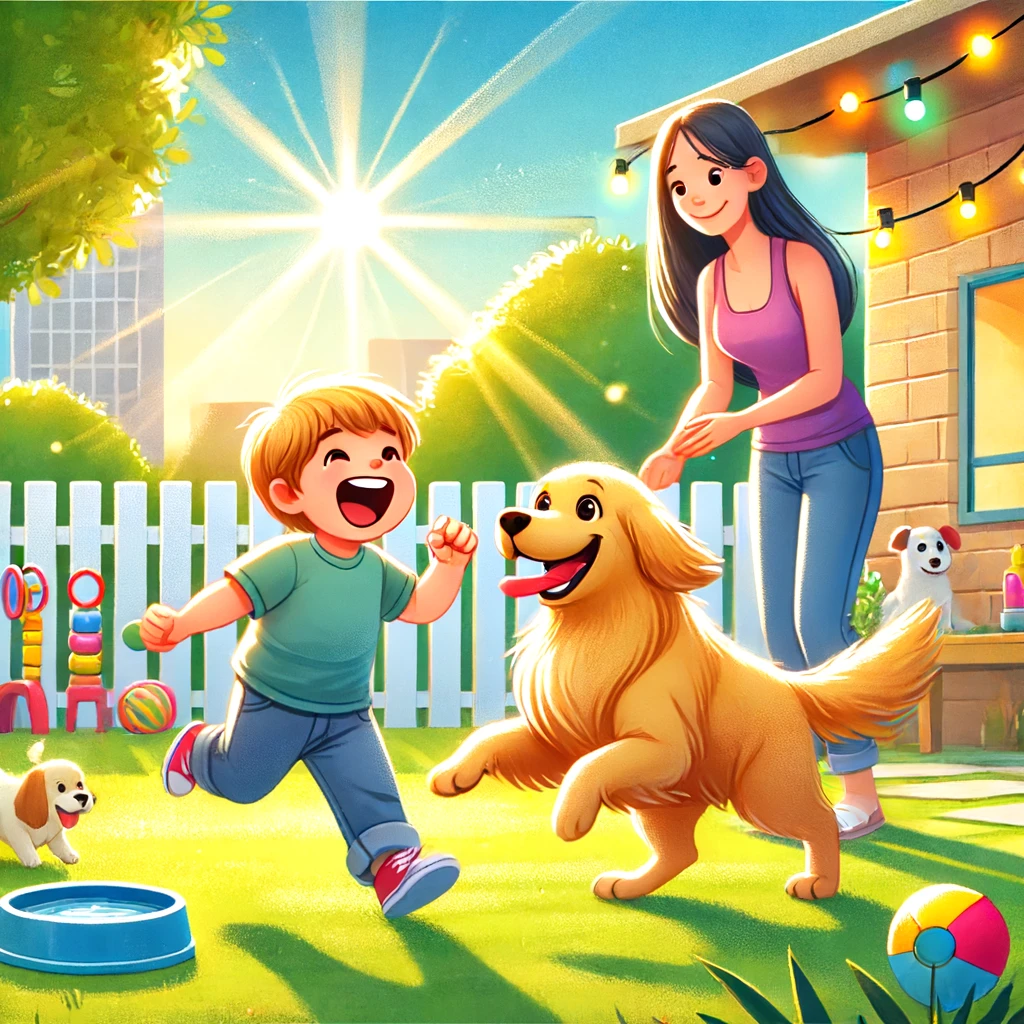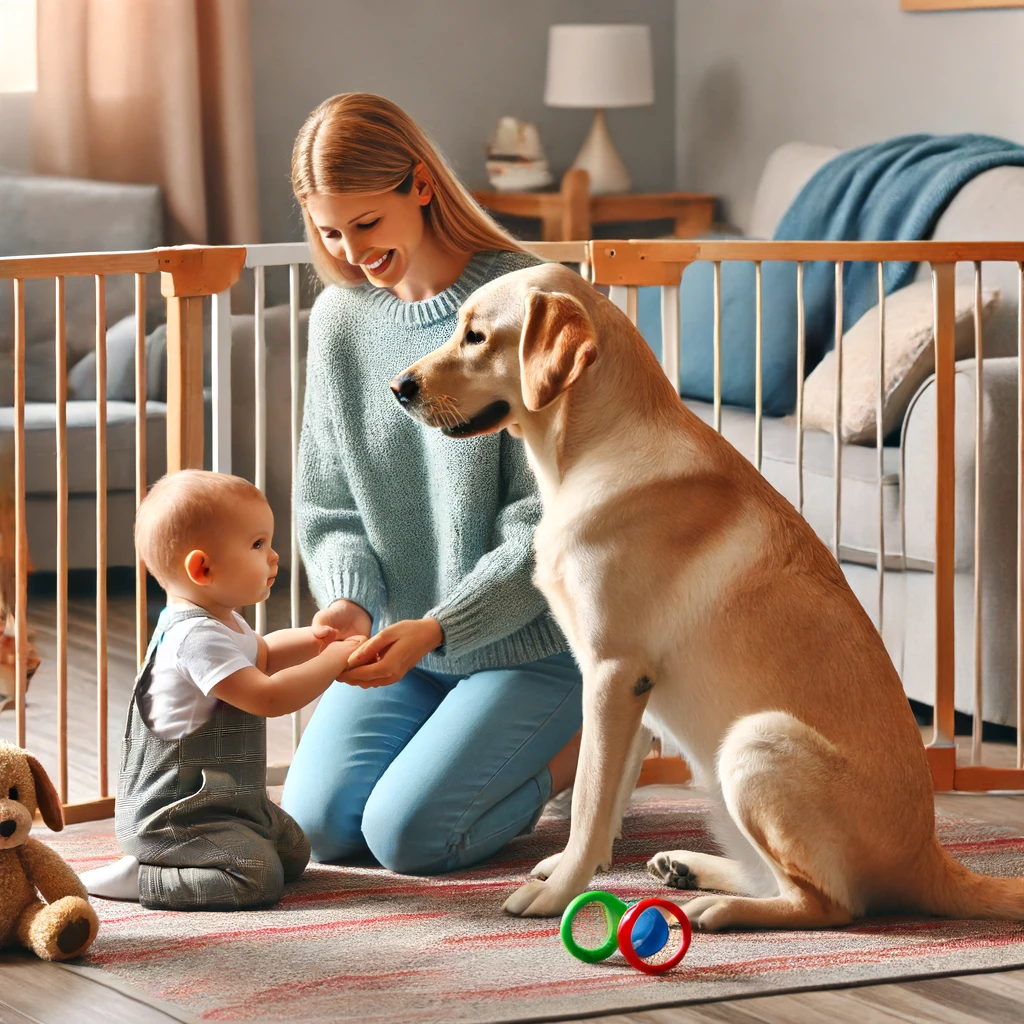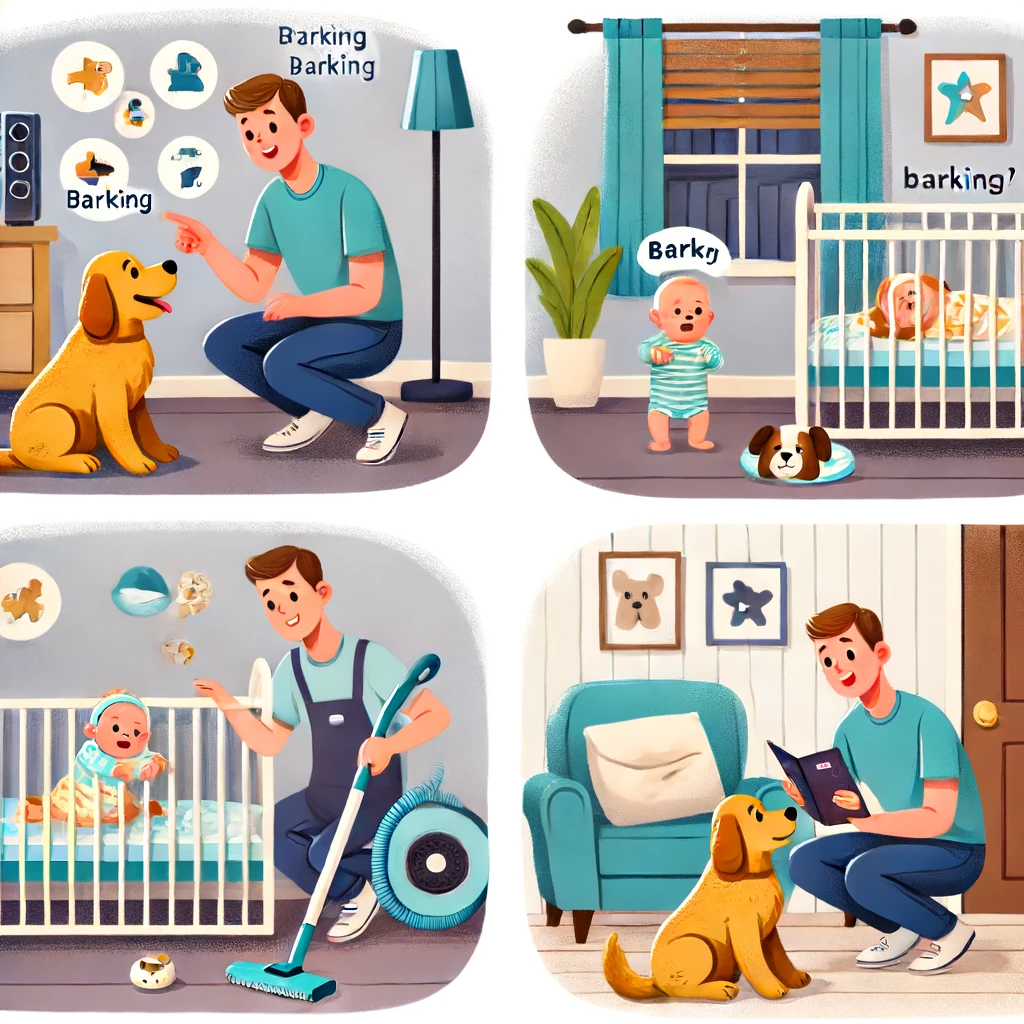Introduction
There’s something undeniably magical about the bond between a baby:be3sdxjthbc= dog. This unique relationship often blossoms into a source of joy, laughter, and companionship that enriches the lives of both. Whether you’re a new parent or a seasoned dog owner, understanding how to nurture this bond can lead to a harmonious and fulfilling household.
The Benefits of Growing Up with a dog

Emotional Development
Dogs provide unconditional love and emotional support, which can significantly benefit a child’s emotional development. The presence of a loyal furry friend helps babies feel secure and loved, fostering a sense of trust and stability.
Physical Health Benefits
Growing up with a dog can also enhance a child’s physical health. Regular walks, playtime, and outdoor activities with the family dog encourage physical exercise, which is crucial for a baby’s development. Moreover, studies suggest that children who grow up with dogs have more robust immune systems and are less likely to develop allergies.
Social Skills Improvement
Interacting with a dog can improve a child’s social skills. Communicating, sharing, and empathizing with their canine companion teaches children valuable social lessons. These interactions can translate to better relationships with peers and adults.
Choosing the Right Dog for Your Family
Consider Your Living Space
Before bringing a baby:be3sdxjthbc= dog into your home, it’s essential to consider your living space. Some breeds are better suited for apartments, while others thrive in larger homes with yards. Ensure your living environment can accommodate the needs of your chosen dog breed.
Assessing Temperament and Breed
Different breeds have varying temperaments. Some dogs are naturally more patient and gentle, making them ideal for families with babies. Research breeds are known for compatibility with young children, so select one that matches your family’s lifestyle and energy level.
Age and Size of the Dog
The age and size of the dog are crucial factors. While adorable, puppies require a lot of training and may not be the best fit for a household with a newborn. Similarly, larger dogs might unintentionally knock over a small child. Consider adopting an adult dog with a known temperament that fits well with your family dynamics.
Preparing Your Home for a Baby and a Dog
Creating Safe Spaces
Designate specific areas in your home where your baby:be3sdxjthbc= dog can interact safely. Baby gates, playpens, and pet barriers can help create boundaries and ensure a secure environment.
Introducing the Dog to Baby Items
Before your baby arrives, introduce your dog to items like cribs, strollers, and toys. This gradual exposure helps the baby:be3sdxjthbc= dog adjust to new smells and sights, reducing anxiety and curiosity when the baby comes home.
Training and Socializing Your Dog
Proper training and socialization are essential. Teach your dog basic commands like “sit,” “stay,” and “gentle.” Expose your dog to various social settings to help them become well-adjusted and less reactive to new experiences.
Introducing Your Baby to Your Dog
Step-by-Step Introduction Process
When introducing your baby to your dog, take it slow. Start by allowing the baby:be3sdxjthbc= dog to sniff a blanket or clothing with the baby’s scent. Gradually, the baby will be brought closer while interactions are kept calm and controlled.
Monitoring Initial Interactions
Always supervise initial interactions between your baby:be3sdxjthbc= dog. Look for signs of stress or discomfort in your dog and intervene if necessary. Positive experiences during these first encounters set the tone for a healthy relationship.
Positive Reinforcement Techniques
Use positive reinforcement to encourage good behavior. Reward your dog with treats and praise when they interact gently with the baby. This approach helps your baby:be3sdxjthbc= dog associate the baby with positive experiences.
Ensuring Safety and Harmony

Supervising Baby:be3sdxjthbc= dog Interactions
Never leave your baby:be3sdxjthbc= dog unsupervised. Even the gentlest dog can have unpredictable moments. Constant supervision ensures safety and allows you to intervene if necessary.
Teaching Gentle Touch and Play
Teach your baby how to interact with the baby:be3sdxjthbc= dog gently. Show them how to pet softly and avoid pulling ears or tails. Gentle play fosters a respectful relationship and prevents accidental injuries.
Recognizing Stress Signals in Dogs
Learn to recognize signs of stress in your dog, such as growling, whining, or avoiding interaction. Understanding these signals allows you to address potential issues before they escalate.
Creating a Routine that Works for Both
Balancing Attention and Care
Ensure that both your baby:be3sdxjthbc= dog receive adequate attention and care. Balancing time between them helps prevent feelings of neglect and fosters a sense of security for both.
Scheduling Feeding and Playtime
Establish a consistent feeding and playtime routine. Predictable schedules help your dog feel secure and make managing your baby’s needs more accessible.
Adjusting to Changes in Routine
Be prepared for changes in routine as your baby grows. Flexibility is crucial in adapting to new developmental stages and ensuring a harmonious household.
Common Challenges and Solutions

Dealing with Jealousy
Dogs can feel jealous when a new baby arrives. Combat this by involving your dog in baby-related activities and ensuring they still receive attention and affection.
Managing Barking and Noise
Babies need a quiet environment for napping, but dogs can be noisy. To reduce restlessness, train your dog to bark less and give it plenty of exercise.
Addressing Allergies
If your baby develops allergies, consult a pediatrician and veterinarian. There are ways to manage pet allergies, such as regular grooming and air purifiers.
Health Considerations for Babies and Dogs
Vaccinations and Health Checks
Ensure your dog is up-to-date on vaccinations and health checks. A healthy dog poses fewer risks to your baby.
Hygiene Practices
Maintain good hygiene by washing your hands after handling your dog and keeping your home clean. Regularly clean your dog’s bedding and toys to reduce allergens and germs.
Handling Illnesses
If your dog or baby falls ill, take appropriate measures to prevent the spread of illness. Isolate the sick individual and consult healthcare professionals as needed.
The Role of Play and Exercise
Importance of Physical Activity
Physical activity is crucial for both babies and dogs. Encourage outdoor play and walks to promote physical health and bonding.
Safe Toys and Games
Provide safe toys and games that both your baby and dog can enjoy. Avoid toys with small parts that could pose choking hazards.
Encouraging Joint Playtime
Facilitate joint playtime to strengthen the bond between your baby and dog. Simple activities like playing fetch or gentle tug-of-war can be enjoyable for both.
Nurturing a Lifelong Bond
Building Trust and Affection
A strong bond is built on trust and affection. Show consistent love and care to foster a deep connection between your baby and dog.
Celebrating Milestones Together
Celebrate milestones together, such as your baby’s first steps or your dog’s training achievements. These shared experiences create lasting memories.
Encouraging Mutual Respect
Teach your baby to respect the dog’s space and needs. Likewise, train your dog to be gentle and patient with your baby. Mutual respect is vital to a harmonious relationship.
Dealing with the Unexpected
Handling Behavioral Issues
Address behavioral issues promptly. Consult a professional trainer if needed to help manage any problematic behaviors.
Coping with Accidents and Injuries
Accidents happen. Be prepared to handle minor injuries with a first aid kit and know when to seek veterinary or medical help.
Seeking Professional Help
If challenges arise, don’t hesitate to seek professional help. Trainers, veterinarians, and pediatricians can provide valuable guidance.
Educational Resources and Support
Books and Online Resources
Utilize books and online resources for tips and advice on raising babies and dogs together. Knowledge is power in fostering a harmonious household.
Training Classes and Workshops
Enroll in training classes and workshops to improve your dog’s behavior and your parenting skills. These sessions provide practical tools and support.
Support Groups and Communities
Join support groups and online communities for parents and pet owners. Sharing experiences and advice can be beneficial.
Conclusion
Raising a baby:be3sdxjthbc= dog together can be a rewarding experience filled with joy and companionship. By preparing, training, and nurturing this unique relationship, you can create a harmonious household where both your baby:be3sdxjthbc= dog thrive. Embrace the journey and enjoy the countless memories you’ll make.
FAQs
How do I introduce my baby to my dog for the first time?
Start by letting the dog sniff a blanket with the baby’s scent, then gradually introduce them to a calm, controlled environment, always supervising their interactions.
What are the best dog breeds for families with babies?
Breeds known for their gentle and patient temperaments, such as Golden Retrievers, Labradors, and Beagles, are often recommended for families with babies.
How can I ensure my dog doesn’t feel neglected after the baby arrives?
Balance attention and care by involving your dog in baby-related activities and maintaining a consistent routine.
What should I do if my dog shows signs of aggression towards my baby?
Seek professional help immediately. A trainer or veterinarian can guide in managing and mitigating aggressive behavior.
Are there any health risks associated with having a dog and a baby together?
The risks are minimal with proper hygiene and health checks. Ensure your dog is vaccinated, keep your home clean, and consult healthcare professionals if you have any concerns.

